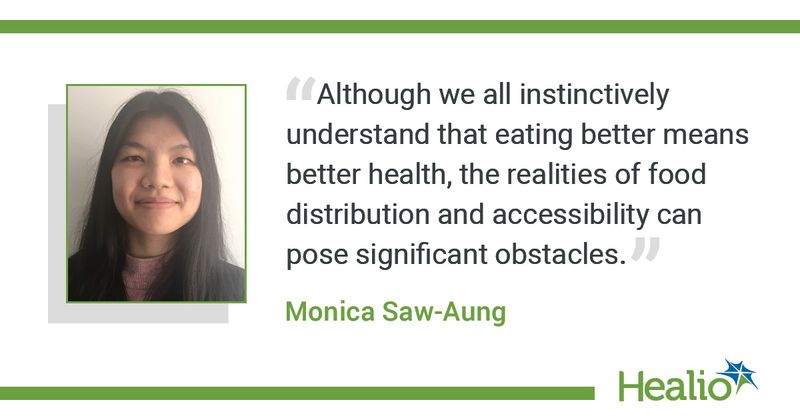SNAP recipients consume more calories, but healthy food choices must be prioritized
Participants of the Supplemental Nutrition Assistance Program, or SNAP, had higher caloric intake than non-participants, according to a study of patients with kidney disease, some of whom also reported food insecurity.
However, receipt of SNAP benefits – which increased by 40% with the passage of the Families First Coronavirus Response Act in March of 2020 – did not lead to adequate nutrition or healthy diet choices.

“We were interested in the impact of nutrition and nutrition policies on health outcomes,” Monica Saw-Aung, of SUNY Downstate Health Sciences University in Brooklyn, told Healio Nephrology. “Although we all instinctively understand that eating better means better health, the realities of food distribution and accessibility can pose significant obstacles. SNAP benefits help against food scarcity on a surface level, but we wanted to assess how much they contribute to better eating on a more quantitative level.”
To investigate, the researchers identified patients residing in the inner city who had chronic kidney disease or who had undergone kidney transplantation. Of the total study population, 47% received SNAP benefits and the median income was determined to be less than $20,000. Overall, 76.4% of participants were Black and 10.9% were Hispanic. Researchers noted that while there were no significant differences in the age, gender or race between SNAP recipients and non-recipients, SNAP recipients were less likely to have attended college (35% vs. 70%) and were more likely to be unemployed, retired or disabled.
After conducting a diet assessment using 24-hour recall, Saw-Aung and colleagues found SNAP recipients ate more calories (1,552 vs. 1,158), more fat (63.4 vs. 44.6) and less fiber (8.06 vs. 13.4) than non-recipients.
Similarly, for patients who also reported food insecurity, those who received SNAP benefits consumed more calories than those who did not receive benefits (1,516 vs. 1,187). Recipients also consumed more protein (74.7 vs. 24.6).
No differences were observed between groups regarding carbohydrate, sugar or sodium intake.
“While conducting our research, we noted that several patients who demonstrated food scarcity refused food delivery programs because they did not enjoy the food choices offered or felt that certain undesired food would go to waste” Saw-Aung said of the portion of patients reporting food insecurity. “If food assistance programs could find ways to accommodate for specific food preferences or interchange parts of their meals, they might be able to promote better adherence for those in need and reduce food waste.”
Further, according to Saw-Aung, it is essential to develop individualized plans for patients when offering food services, ones that account for varied patient perspectives and specific resources.
“Therefore, there should be more training given to health care professionals about local food resources available and strategies for healthy eating that are practical for the patient,” she said.
As for additional research, Saw-Aung suggests focusing on the efficacy of different nutrition education strategies rather than the efficacy of different diets.

